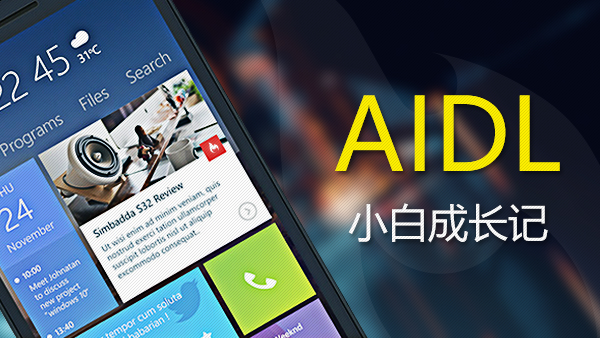PS:本文中的例子来源于官网地址:
PS:本文中的例子来源于官网地址:Caching Bitmaps,源码地址(自备梯子):Caching Bitmaps Demo,并在其基础上稍微改变了一下。
PPS:本文仅用于学习利用LruCache、DiskLruCache图片缓存策略、实现瀑布流和Matix查看大图缩放移动等功能,如果想用到项目中,建议用更成熟的框架,如glide、picasso 等。
在开始本文之前,请先了解下LruCache和DiskLruCache的用法,不了解的可以先看下这两篇:
1、Android使用磁盘缓存DiskLruCache
2、Android内存缓存LruCache源码解析
嗯,效果还是不错的~代码已上传Github:LruCache、DiskLruCache实现图片缓存
###图片瀑布流
这个用RecycleView来实现已经很简单了,直接上代码:
recycler_view = (RecyclerView) findViewById(R.id.recycler_view); recycler_view.setLayoutManager(new StaggeredGridLayoutManager(3, StaggeredGridLayoutManager.VERTICAL));
首先初始化StaggeredGridLayoutManager,这里设置显示方式是竖直方向3列,然后通过recycleView的setLayoutManager设置好,接着看RecyclerView.Adapter中的处理:
public class WaterFallAdapter extends RecyclerView.Adapter<WaterFallAdapter.MyHolder> { private int DATA_SIZE = Constant.imageUrls.length; private List<Integer> hList;//定义一个List来存放图片的height
public WaterFallAdapter(Context mContext) { this.mContext = mContext;
hList = new ArrayList<>(); for (int i = 0; i < DATA_SIZE; i++) { //每次随机一个高度并添加到hList中
int height = new Random().nextInt(200) + 300;//[100,500)的随机数
hList.add(height);
}
} @Override
public void onBindViewHolder(final MyHolder holder, int position) { //通过setLayoutParams(params)来设置图片的宽高信息
int width = DpUtil.getScreenSizeWidth(mContext) / 3;
RecyclerView.LayoutParams params = new RecyclerView.LayoutParams(width, hList.get(position));
holder.imageView.setLayoutParams(params);
}
}在WaterFallAdapter构造方法中将随机高度添加到存放图片height的hList中,并在onBindViewHolder()中取出图片的宽高并通过setLayoutParams(params)来设置图片的宽高信息,经过上面的代码,一个图片的瀑布流效果就出来了,so easy~
图片缓存
下面接着看本文的重点,实现图片的缓存策略:
先看怎么使用的:
private static final String IMAGE_CACHE_DIR = "thumbs";//图片缓存目录
@Override
protected void onCreate(@Nullable Bundle savedInstanceState) {
ImageCache.ImageCacheParams cacheParams = new ImageCache.ImageCacheParams(this, IMAGE_CACHE_DIR);
cacheParams.setMemCacheSizePercent(0.25f);// Set memory cache to 25% of app memory
// The ImageFetcher takes care of loading images into our ImageView children asynchronously
mImageFetcher = new ImageFetcher(this, (int) DpUtil.dp2px(this, 100));
mImageFetcher.setLoadingImage(R.mipmap.img_default_bg);
mImageFetcher.addImageCache(cacheParams);
}上面初始化了缓存大小和下载时ImageView加载默认的图片等操作,然后在RecyclerView的onBindViewHolder()开始加载图片:
@Override
public void onBindViewHolder(final MyHolder holder, int position) {
.............其他操作.............
mImageFetcher.loadImage(Constant.imageUrls[position], holder.imageView);接下来就依次分析一下各个类的作用:
ImageCache.java:
public class ImageCache { // Default memory cache size in kilobytes
private static final int DEFAULT_MEM_CACHE_SIZE = 1024 * 5; // 5KB
// Default disk cache size in bytes
private static final int DEFAULT_DISK_CACHE_SIZE = 1024 * 1024 * 10; // 10MB
//内存缓存核心类,用于缓存已经下载好的图片
private DiskLruCache mDiskLruCache; //磁盘缓存核心类,用于缓存图片到外部存储中
private LruCache<String, BitmapDrawable> mMemoryCache; //ImageCacheParams 是ImageCache 的内部类,用于设置图片缓存缓存的各个参数
private ImageCacheParams mCacheParams; //使用Set保存数据可以确保没有重复元素,使用软引用SoftReference关联Bitmap,当内存不足时Bitmap会被回收
private Set<SoftReference<Bitmap>> mReusableBitmaps; //实现一个单例模式
private volatile static ImageCache imageCache; public static ImageCache getInstance(ImageCacheParams cacheParams) { if (imageCache == null) { synchronized (ImageCache.class) { if (imageCache == null) {
imageCache = new ImageCache(cacheParams);
}
}
} return imageCache;
} private ImageCache(ImageCacheParams cacheParams) {
init(cacheParams);
} private void init(ImageCacheParams cacheParams) {
mCacheParams = cacheParams; if (Utils.hasHoneycomb()) {
mReusableBitmaps =
Collections.synchronizedSet(new HashSet<SoftReference<Bitmap>>());
} //初始化LruCache并覆写entryRemoved()和sizeOf()方法
mMemoryCache = new LruCache<String, BitmapDrawable>(mCacheParams.memCacheSize) { @Override
protected void entryRemoved(boolean evicted, String key,
BitmapDrawable oldValue, BitmapDrawable newValue) { if (RecyclingBitmapDrawable.class.isInstance(oldValue)) { // The removed entry is a recycling drawable, so notify it
// that it has been removed from the memory cache
((RecyclingBitmapDrawable) oldValue).setIsCached(false);
} else { // The removed entry is a standard BitmapDrawable
if (Utils.hasHoneycomb()) { // We're running on Honeycomb or later, so add the bitmap
// to a SoftReference set for possible use with inBitmap later
mReusableBitmaps.add(new SoftReference<Bitmap>(oldValue.getBitmap()));
}
}
} @Override
protected int sizeOf(String key, BitmapDrawable value) { final int bitmapSize = getBitmapSize(value) / 1024; return bitmapSize == 0 ? 1 : bitmapSize;
}
}; // By default the disk cache is not initialized here as it should be initialized
// on a separate thread due to disk access.
if (cacheParams.initDiskCacheOnCreate) { // Set up disk cache
initDiskCache();
}
}//初始化DiskLruCache,因为操作外部存储比较耗时,所以这部分最好放在子线程中执行
public void initDiskCache() { // Set up disk cache
synchronized (mDiskCacheLock) { if (mDiskLruCache == null || mDiskLruCache.isClosed()) {
File diskCacheDir = mCacheParams.diskCacheDir; if (mCacheParams.diskCacheEnabled && diskCacheDir != null) { if (!diskCacheDir.exists()) {
diskCacheDir.mkdirs();
} if (getUsableSpace(diskCacheDir) > mCacheParams.diskCacheSize) { try {
mDiskLruCache = DiskLruCache.open(
diskCacheDir, 1, 1, mCacheParams.diskCacheSize);
} catch (final IOException e) {
mCacheParams.diskCacheDir = null;
Log.e(TAG, "initDiskCache - " + e);
}
}
}
}
mDiskCacheStarting = false;
mDiskCacheLock.notifyAll();
}
}//将图片添加到内存缓存和外部缓存中public void addBitmapToCache(String data, BitmapDrawable value) { if (data == null || value == null) { return;
} // Add to memory cache
if (mMemoryCache != null) { if (RecyclingBitmapDrawable.class.isInstance(value)) { // The removed entry is a recycling drawable, so notify it
// that it has been added into the memory cache
((RecyclingBitmapDrawable) value).setIsCached(true);
}
mMemoryCache.put(data, value);
} synchronized (mDiskCacheLock) { //Add to disk cache
if (mDiskLruCache != null) { final String key = hashKeyForDisk(data);
OutputStream out = null; try {
DiskLruCache.Snapshot snapshot = mDiskLruCache.get(key); if (snapshot == null) { final DiskLruCache.Editor editor = mDiskLruCache.edit(key); if (editor != null) {
out = editor.newOutputStream(DISK_CACHE_INDEX);
value.getBitmap().compress(
mCacheParams.compressFormat, mCacheParams.compressQuality, out);
editor.commit();
out.close();
}
} else {
snapshot.getInputStream(DISK_CACHE_INDEX).close();
}
} catch (Exception e) {
Log.e(TAG, "addBitmapToCache - " + e);
} finally { try { if (out != null) {
out.close();
}
} catch (IOException e) {
}
}
}
}
} //清除缓存,该方法也应该在子线程中调用
public void clearCache() { if (mMemoryCache != null) {
mMemoryCache.evictAll(); if (BuildConfig.DEBUG) {
Log.d(TAG, "Memory cache cleared");
}
} synchronized (mDiskCacheLock) {
mDiskCacheStarting = true; if (mDiskLruCache != null && !mDiskLruCache.isClosed()) { try {
mDiskLruCache.delete();
} catch (Exception e) {
Log.e(TAG, "clearCache - " + e);
}
mDiskLruCache = null;
initDiskCache();
}
}
}//从内存缓存中取出图片
public BitmapDrawable getBitmapFromMemCache(String data) {
BitmapDrawable memValue = null; if (mMemoryCache != null) {
memValue = mMemoryCache.get(data);
} return memValue;
}//从外部存储中取出图片
public Bitmap getBitmapFromDiskCache(String data) { final String key = hashKeyForDisk(data);
Bitmap bitmap = null; synchronized (mDiskCacheLock) { while (mDiskCacheStarting) { try {
mDiskCacheLock.wait();
} catch (Exception e) {
}
} if (mDiskLruCache != null) {
InputStream inputStream = null; try { final DiskLruCache.Snapshot snapshot = mDiskLruCache.get(key); if (snapshot != null) {
inputStream = snapshot.getInputStream(DISK_CACHE_INDEX); if (inputStream != null) {
FileDescriptor fd = ((FileInputStream) inputStream).getFD(); // Decode bitmap, but we don't want to sample so give
// MAX_VALUE as the target dimensions
bitmap = ImageResizer.decodeSampledBitmapFromDescriptor(
fd, Integer.MAX_VALUE, Integer.MAX_VALUE, this);
}
}
} catch (Exception e) {
Log.e(TAG, "getBitmapFromDiskCache - " + e);
} finally { try { if (inputStream != null) {
inputStream.close();
}
} catch (Exception e) {
}
}
}
} return bitmap;
} public static class ImageCacheParams { public int memCacheSize = DEFAULT_MEM_CACHE_SIZE; public int diskCacheSize = DEFAULT_DISK_CACHE_SIZE; public File diskCacheDir; public Bitmap.CompressFormat compressFormat = DEFAULT_COMPRESS_FORMAT; public int compressQuality = DEFAULT_COMPRESS_QUALITY; public boolean memoryCacheEnabled = DEFAULT_MEM_CACHE_ENABLED; public boolean diskCacheEnabled = DEFAULT_DISK_CACHE_ENABLED; public boolean initDiskCacheOnCreate = DEFAULT_INIT_DISK_CACHE_ON_CREATE; public ImageCacheParams(Context context, String diskCacheDirectoryName) { //外存缓存目录
diskCacheDir = getDiskCacheDir(context, diskCacheDirectoryName);
} //设置图片内存缓存和应用最大内存的比例
public void setMemCacheSizePercent(float percent) {
memCacheSize = Math.round(percent * Runtime.getRuntime().maxMemory() / 1024);
}
}
}ImageCache这个类主要是初始化了LruCache和DiskLruCache用来缓存图片到内存和外存中去,并从内存外存中取出图片及清除缓存等操作
ImageWorker.java:
public abstract class ImageWorker { //初始化ImageCache和外存缓存
public void addImageCache(ImageCache.ImageCacheParams cacheParams) {
mImageCacheParams = cacheParams;
mImageCache = ImageCache.getInstance(mImageCacheParams); new CacheAsyncTask().execute(MESSAGE_INIT_DISK_CACHE);
} //加载本地图片,如果没有去服务器下载该图片
public void loadImage(Object data, ImageView imageView, OnImageLoadedListener listener) { if (data == null) return;
BitmapDrawable bitmapDrawable = null; if (mImageCache != null) {
bitmapDrawable = mImageCache.getBitmapFromMemCache(String.valueOf(data));
} if (bitmapDrawable != null) { // Bitmap found in memory cache
imageView.setImageDrawable(bitmapDrawable); if (listener != null) {
listener.onImageLoaded(true);
}
} else if (cancelPotentialWork(data, imageView)) { final BitmapWorkerTask task = new BitmapWorkerTask(data, imageView, listener); final AsyncDrawable asyncDrawable = new AsyncDrawable(mResources, mLoadingBitmap, task);
imageView.setImageDrawable(asyncDrawable); // NOTE: This uses a custom version of AsyncTask that has been pulled from the
// framework and slightly modified. Refer to the docs at the top of the class
// for more info on what was changed.
task.executeOnExecutor(AsyncTask.DUAL_THREAD_EXECUTOR);
}
}
}ImageWorker处理ImageView加载Bitmap时的耗时操作,如处理内存缓存和外存缓存的使用,ImageWorker中的两个主要方法:addImageCache() 和 loadImage() 方法。
1、addImageCache()中获得了ImageCache的单例对象,并开启CacheAsyncTask在新线程中初始化缓存:
protected class CacheAsyncTask extends AsyncTask<Object, Void, Void> { @Override
protected Void doInBackground(Object... params) { int param = (int) params[0]; switch (param) { case MESSAGE_CLEAR:
clearCacheInternal(); break; case MESSAGE_INIT_DISK_CACHE:
initDiskCacheInternal(); break; case MESSAGE_FLUSH:
flushCacheInternal(); break; case MESSAGE_CLOSE:
closeCacheInternal(); break;
} return null;
}
} //清除缓存
protected void clearCacheInternal() { if (mImageCache != null) {
mImageCache.clearCache();
}
} //初始化缓存
protected void initDiskCacheInternal() { if (mImageCache != null) {
mImageCache.initDiskCache();
}
} //强制将缓存刷新到文件系统中
protected void flushCacheInternal() { if (mImageCache != null) {
mImageCache.flush();
}
} //关闭缓存
protected void closeCacheInternal() { if (mImageCache != null) {
mImageCache.close();
mImageCache = null;
}
}2、loadImage()方法中,首先通过mImageCache.getBitmapFromMemCache尝试从内存中取出图片,如果内存中有,直接取出来显示,流程结束;如果内存中没有,就调用到了cancelPotentialWork(),来看这个方法:
public static boolean cancelPotentialWork(Object data, ImageView imageView) { final BitmapWorkerTask bitmapWorkerTask = getBitmapWorkerTask(imageView); if (bitmapWorkerTask != null) { final Object bitmapData = bitmapWorkerTask.mData; if (bitmapData == null || !bitmapData.equals(data)) {
bitmapWorkerTask.cancel(true);
} else { // The same work is already in progress.
return false;
}
} return true;
} //获得与ImageView关联的BitmapWorkerTask ,如果没有返回Null
private static BitmapWorkerTask getBitmapWorkerTask(ImageView imageView) { if (imageView != null) { final Drawable drawable = imageView.getDrawable(); if (drawable instanceof AsyncDrawable) { final AsyncDrawable asyncDrawable = (AsyncDrawable) drawable; return asyncDrawable.getBitmapWorkerTask();
}
} return null;
}首先通过getBitmapWorkerTask()获得与ImageView关联的BitmapWorkerTask(以下简称task),如果作用在ImageView上的task存在并且task.mData(图片的URL)没有改变,那么task接着执行,直到下载完图片;如果task.mData变化了,那么取消之前作用在ImageView上的task,重新去new一个Task下载新的图片。其实是这样:当我们不滑动界面的时候,task.mData(图片的URL)是不会改变的,但是当我们滑动界面的时候,比如现在RecycleView一屏显示5个ItemView,往上滑动时,第一个ItemView不可见并且此时第一个ItemView的图片还没有下载完成,第6个ItemView会复用之前第一个ItemView,如果此时继续执行第一个ItemView对应的task,那么这时候第6个ItemView显示的就是第一个ItemView应该显示的图片了,这就是我们经常遇到的显示错位问题。所以这里要判断task.mData(图片的URL)是否一致,如果不一致,需要取消之前的task,重启一个新的task,并把新的task关联给ImageView。看看task里面都干了些什么:
private class BitmapWorkerTask extends AsyncTask<Void, Void, BitmapDrawable> { private Object mData; private final WeakReference<ImageView> imageViewWeakReference; private final OnImageLoadedListener mOnImageLoadedListener; /**
* Background processing.
*/
public BitmapWorkerTask(Object data, ImageView imageView) {
mData = data;
imageViewWeakReference = new WeakReference<ImageView>(imageView);
mOnImageLoadedListener = null;
} public BitmapWorkerTask(Object data, ImageView imageView, OnImageLoadedListener listener) {
mData = data; //弱引用关联一个ImageView
imageViewWeakReference = new WeakReference<>(imageView);
mOnImageLoadedListener = listener;
} @Override
protected BitmapDrawable doInBackground(Void... params) {
final String dataString = String.valueOf(mData);
Bitmap bitmap = null;
BitmapDrawable drawable = null; // Wait here if work is paused and the task is not cancelled
synchronized (mPauseWorkLock) { while (mPauseWork && !isCancelled()) { try {
mPauseWorkLock.wait();
} catch (Exception e) {
}
}
} if (mImageCache != null && !isCancelled() && getAttachedImageView() != null
&& !mExitTasksEarly) { //从外部存储去取图片
bitmap = mImageCache.getBitmapFromDiskCache(dataString);
} if (bitmap == null && !isCancelled() && getAttachedImageView() != null
&& !mExitTasksEarly) { //如果外存中也没有图片,那么就去服务器上下载
bitmap = processBitmap(mData);
} if (bitmap != null) { if (Utils.hasHoneycomb()) { // Running on Honeycomb or newer, so wrap in a standard BitmapDrawable
drawable = new BitmapDrawable(mResources, bitmap);
} else { // Running on Gingerbread or older, so wrap in a RecyclingBitmapDrawable
// which will recycle automagically
drawable = new RecyclingBitmapDrawable(mResources, bitmap);
} if (mImageCache != null) { //把下载的图片缓存到内存和外存中去
mImageCache.addBitmapToCache(dataString, drawable);
}
} return drawable;
} @Override
protected void onPostExecute(BitmapDrawable value) { boolean success = false; // if cancel was called on this task or the "exit early" flag is set then we're done
if (isCancelled() || mExitTasksEarly) {
value = null;
} final ImageView imageView = getAttachedImageView(); if (value != null && imageView != null) {
success = true; //给ImageView设置图片
setImageDrawable(imageView, value);
} if (mOnImageLoadedListener != null) { //执行回调
mOnImageLoadedListener.onImageLoaded(success);
}
} @Override
protected void onCancelled(BitmapDrawable value) { super.onCancelled(value); synchronized (mPauseWorkLock) {
mPauseWorkLock.notifyAll();
}
} private ImageView getAttachedImageView() { final ImageView imageView = imageViewWeakReference.get(); final BitmapWorkerTask bitmapWorkerTask = getBitmapWorkerTask(imageView); if (this == bitmapWorkerTask) { return imageView;
} return null;
}
}BitmapWorkerTask 的工作很明确,首先开启一个新线程,先确认外存中是否有相应缓存图片,如果有,直接拿出来使用并返回结果;如果没有,去服务器上下载该图片,并将该图片缓存到内存和外存中去,最后onPostExecute()中加载图片并执行结果回调。
ImageResizer.java (extends ImageWorker):
public class ImageResizer extends ImageWorker { protected int mImageWidth; protected int mImageHeight; protected ImageResizer(Context context, int imageWidth, int imageHeight) { super(context);
setImageSize(imageWidth, imageHeight);
} //设置图片的宽高
private void setImageSize(int imageWidth, int imageHeight) { this.mImageWidth = imageWidth; this.mImageHeight = imageHeight;
} @Override
protected Bitmap processBitmap(Object data) { //覆写父类的方法,加载本地图片
return processBitmap(Integer.parseInt(String.valueOf(data)));
} private Bitmap processBitmap(int resId) { return decodeSampledBitmapFromResource(mResources, resId, mImageWidth,
mImageHeight, getImageCache());
} //从本地resource中解码bitmap并采样源bitmap至指定大小的宽高
public static Bitmap decodeSampledBitmapFromResource(Resources res, int resId, int reqWidth, int reqHeight, ImageCache cache) { // First decode with inJustDecodeBounds=true to check dimensions
final BitmapFactory.Options options = new BitmapFactory.Options();
options.inJustDecodeBounds = true;
BitmapFactory.decodeResource(res, resId, options); // Calculate inSampleSize
options.inSampleSize = calculateInSampleSize(options, reqWidth, reqHeight); // If we're running on Honeycomb or newer, try to use inBitmap
if (Utils.hasHoneycomb()) {
addInBitmapOptions(options, cache);
} // Decode bitmap with inSampleSize set
options.inJustDecodeBounds = false; return BitmapFactory.decodeResource(res, resId, options);
}
} //从本地文件中解码bitmap并采样源bitmap至指定大小的宽高
public static Bitmap decodeSampledBitmapFromFile(String filename, int reqWidth, int reqHeight, ImageCache cache) { // First decode with inJustDecodeBounds=true to check dimensions
final BitmapFactory.Options options = new BitmapFactory.Options();
options.inJustDecodeBounds = true;
BitmapFactory.decodeFile(filename, options); // Calculate inSampleSize
options.inSampleSize = calculateInSampleSize(options, reqWidth, reqHeight); // If we're running on Honeycomb or newer, try to use inBitmap
if (Utils.hasHoneycomb()) {
addInBitmapOptions(options, cache);
} // Decode bitmap with inSampleSize set
options.inJustDecodeBounds = false; return BitmapFactory.decodeFile(filename, options);
} //从文件输入流中解码bitmap并采样源bitmap至指定大小的宽高
public static Bitmap decodeSampledBitmapFromDescriptor(
FileDescriptor fileDescriptor, int reqWidth, int reqHeight, ImageCache cache) { // First decode with inJustDecodeBounds=true to check dimensions
final BitmapFactory.Options options = new BitmapFactory.Options();
options.inJustDecodeBounds = true;
BitmapFactory.decodeFileDescriptor(fileDescriptor, null, options); // Calculate inSampleSize
options.inSampleSize = calculateInSampleSize(options, reqWidth, reqHeight); // Decode bitmap with inSampleSize set
options.inJustDecodeBounds = false; // If we're running on Honeycomb or newer, try to use inBitmap
if (Utils.hasHoneycomb()) {
addInBitmapOptions(options, cache);
} return BitmapFactory.decodeFileDescriptor(fileDescriptor, null, options);
}//计算采样率大小
public static int calculateInSampleSize(BitmapFactory.Options options, int reqWidth, int reqHeight) { // Raw height and width of image
final int height = options.outHeight; final int width = options.outWidth; //采样率
int inSampleSize = 1; //判断图片的宽高之一是否大于所需宽高
if (height > reqHeight || width > reqWidth) { //图片宽高之一大于所需宽高,那么宽高都除以2
final int halfHeight = height / 2; final int halfWidth = width / 2; //循环宽高除以采样率的值,如果大于所需宽高,采样率inSampleSize翻倍
//PS:采样率每变大2倍,图片大小缩小至原来大小的1/4
while ((halfHeight / inSampleSize) > reqHeight
&& (halfWidth / inSampleSize) > reqWidth) {
inSampleSize *= 2;
} //下面逻辑是为了处理一些不规则图片,如一张图片的height特别大,远大于width,此时图片的大小很大,
//此时加到内存中去依然不合适,算出总此时图片总像素大小totalPixels
long totalPixels = width * height / inSampleSize; //如果图片总像素大于所需总像素的2倍,继续扩大采样率
final long totalReqPixelsCap = reqHeight * reqWidth * 2; while (totalPixels > totalReqPixelsCap) {
inSampleSize *= 2;
totalPixels /= 2;
}
} //返回最终的采样率inSampleSize
return inSampleSize;
} //如果SDK>11,通过设置options.inBitmap尝试复用ImageCache中mReusableBitmaps的缓存bitmap,
//这样可以避免频繁的申请内存和销毁内存
private static void addInBitmapOptions(BitmapFactory.Options options, ImageCache cache) { // inBitmap only works with mutable bitmaps(可变的位图) so force the decoder to
// return mutable bitmaps.
options.inMutable = true; if (cache != null) { // Try and find a bitmap to use for inBitmap
Bitmap inBitmap = cache.getBitmapFromReusableSet(options); if (inBitmap != null) {
options.inBitmap = inBitmap;
}
}
}
}ImageResizer继承自ImageWorker,ImageResizer类可以调整bitmap到指定宽高,主要用到了BitmapFactory.Options这个内部类来处理加载图片(后面介绍),当本地图片很大时,不能直接加载到内存中去,需要经过ImageResizer处理一下。下面介绍一下BitmapFactory.Options的常用方法:
BitmapFactory用来解码创建一个Bitmap,Options是BitmapFactory的一个静态内部类,是解码Bitmap时的各种参数控制:
public class BitmapFactory { private static final int DECODE_BUFFER_SIZE = 16 * 1024; public static class Options { public boolean inJustDecodeBounds; public int inSampleSize; public Bitmap.Config inPreferredConfig = Bitmap.Config.ARGB_8888; public int outWidth; public int outHeight; public String outMimeType; public boolean inMutable; public Bitmap inBitmap;
............其他参数............
}
}inJustDecodeBounds:如果设置为true,则不会把bitmap加载到内存中,但是依然可以得到bitmap的宽高,当需要知道bitmap的宽高而又不想把bitmap加载到内存中去的时候,就可以通过设置这个属性来实现。
inSampleSize:采样率,如果value > 1,解码器将会按(1/inSampleSize)的比例减小宽高,然后返回一个压缩后的图片到内存中,例如: inSampleSize == 4,返回一个宽高都是原图片1/4的压缩图片,图片被压缩到原来的1/16,;如果inSampleSize的value <= 1,都会被当成1处理,即保持原样。
inPreferredConfig :设置色彩模式,默认值是ARGB_8888,在这个模式下,一个像素点占用4bytes空间;如果对透明度不做要求的话,可以采用RGB_565模式,这个模式下一个像素点占用2bytes。
outWidth:bitmap的宽度,如果inJustDecodeBounds=true,outWidth将是原图的宽度;如果inJustDecodeBounds=false,outWidth将是经过缩放后的bitmap的宽度。如果解码过程中发生错误,将返回-1。
outHeight:bitmap的高度,如果inJustDecodeBounds=true,outHeight将是原图的高度;如果inJustDecodeBounds=false,outHeight将是经过缩放后的bitmap的高度。如果解码过程中发生错误,将返回-1。
outMimeType:获取图片的类型,如果获取不到图片类型或者解码发生错误,outMimeType将会被设置成null。
inMutable:设置Bitmap是否可更改,如在Bitmap上进行额外操作
inBitmap:解析Bitmap的时候重用其他Bitmap的内存,避免大块内存的申请和销毁,使用inBitmap时inMutable必须设置为true
ImageResizer .java:
public class ImageFetcher extends ImageResizer {
..............省略部分代码.............. private static final int HTTP_CACHE_SIZE = 10 * 1024 * 1024; // 10MB
private static final String HTTP_CACHE_DIR = "http"; private static final int IO_BUFFER_SIZE = 8 * 1024; private DiskLruCache mHttpDiskCache; private File mHttpCacheDir; public ImageFetcher(Context context, int imageSize) { super(context, imageSize);
init(context);
} //初始化外存缓存
private void init(Context context) {
checkConnection(context);
mHttpCacheDir = ImageCache.getDiskCacheDir(context, HTTP_CACHE_DIR);
} //检查网络状态
private void checkConnection(Context context) { final ConnectivityManager cm =
(ConnectivityManager) context.getSystemService(Context.CONNECTIVITY_SERVICE); final NetworkInfo networkInfo = cm.getActiveNetworkInfo(); if (networkInfo == null || !networkInfo.isConnectedOrConnecting()) {
Toast.makeText(context, "no_network_connection_toast", Toast.LENGTH_LONG).show();
Log.e(TAG, "checkConnection - no connection found");
}
}@Override
protected Bitmap processBitmap(Object data) { return processBitmap(String.valueOf(data));
} private Bitmap processBitmap(String data) { final String key = ImageCache.hashKeyForDisk(data);
FileDescriptor fileDescriptor = null;
FileInputStream fileInputStream = null;
DiskLruCache.Snapshot snapshot; synchronized (mHttpDiskCacheLock) { // Wait for disk cache to initialize
while (mHttpDiskCacheStarting) { try {
mHttpDiskCacheLock.wait();
} catch (InterruptedException e) {
}
} if (mHttpDiskCache != null) { try { //在外存中读取图片
snapshot = mHttpDiskCache.get(key); if (snapshot == null) { //外存中没有,则开始去服务器上下载
DiskLruCache.Editor editor = mHttpDiskCache.edit(key); if (editor != null) { if (downloadUrlToStream(data,
editor.newOutputStream(DISK_CACHE_INDEX))) { //写入外存缓存,这里保存的是原始图
editor.commit();
} else {
editor.abort();
}
} //从外存中读取出该图片
snapshot = mHttpDiskCache.get(key);
} if (snapshot != null) {
fileInputStream =
(FileInputStream) snapshot.getInputStream(DISK_CACHE_INDEX);
fileDescriptor = fileInputStream.getFD();
}
} catch (IOException e) {
Log.e(TAG, "processBitmap - " + e);
} catch (IllegalStateException e) {
Log.e(TAG, "processBitmap - " + e);
} finally { if (fileDescriptor == null && fileInputStream != null) { try {
fileInputStream.close();
} catch (IOException e) {
}
}
}
}
}
Bitmap bitmap = null; if (fileDescriptor != null) { //将取出来的图片压缩到指定大小并在后面的逻辑中保存,这里保存的是缩略图
bitmap = decodeSampledBitmapFromDescriptor(fileDescriptor, mImageWidth,
mImageHeight, getImageCache());
} if (fileInputStream != null) { try {
fileInputStream.close();
} catch (IOException e) {
}
} return bitmap;
}//根据URL去下载图片
private boolean downloadUrlToStream(String urlString, OutputStream outputStream) {
disableConnectionReuseIfNecessary();
HttpURLConnection urlConnection = null;
BufferedOutputStream out = null;
BufferedInputStream in = null; try { final URL url = new URL(urlString);
urlConnection = (HttpURLConnection) url.openConnection();
in = new BufferedInputStream(urlConnection.getInputStream(), IO_BUFFER_SIZE);
out = new BufferedOutputStream(outputStream, IO_BUFFER_SIZE); int b; while ((b = in.read()) != -1) {
out.write(b);
} return true;
} catch (Exception e) {
Log.e(TAG, "Error in downloadBitmap - " + e);
} finally { if (urlConnection != null) {
urlConnection.disconnect();
} try { if (out != null) {
out.close();
} if (in != null) {
in.close();
}
} catch (final IOException e) {
}
} return false;
}
}ImageFetcher继承自ImageResizer ,ImageFetcher根据URL从服务器中得到图片并分别把原始图和缩略图缓存到外存中,这里设置的两个缓存目录:
/storage/emulated/0/Android/data/package_name/http (用来存放原始图)
/storage/emulated/0/Android/data/package_name/thumbs (用来存放缩略图)

 随时随地看视频
随时随地看视频




